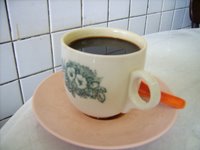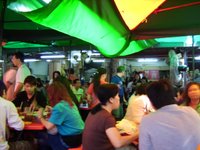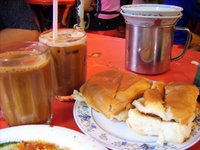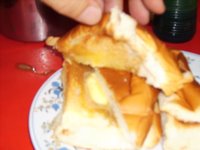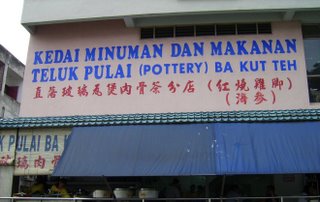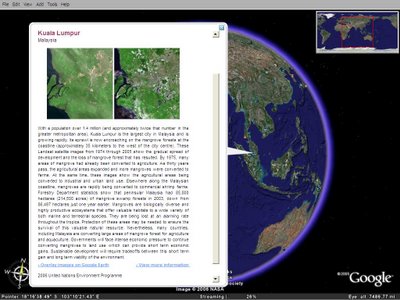 On 21 Oct 2006, all Hindus celebrated the festival of lights. It is a celebration to commerate Lord Rama's homecoming after defeating the demon Ravana, Lord Krishna's triumph over the demon Narakasura, and moany other versions of the origin of Deepavali. All in all, it is simply a celebration to commemorate renewal of life! I would like to show you photos of kolam (a decorative art form created on the floor using coloured rice powder), lighted oil lamps in clay dish, offering plate to ancestors and gods/goddesses, and the food - muruku, ommapadi, chippi, sweet meats, rice puddings and many many more. Unfortunately, I was not able to attend my friend's open house because I had to travel doen to Ipoh to attend my boyfriend's sister's wedding. Sorry Suja, and happy deepavali. Hopefully next year...
On 21 Oct 2006, all Hindus celebrated the festival of lights. It is a celebration to commerate Lord Rama's homecoming after defeating the demon Ravana, Lord Krishna's triumph over the demon Narakasura, and moany other versions of the origin of Deepavali. All in all, it is simply a celebration to commemorate renewal of life! I would like to show you photos of kolam (a decorative art form created on the floor using coloured rice powder), lighted oil lamps in clay dish, offering plate to ancestors and gods/goddesses, and the food - muruku, ommapadi, chippi, sweet meats, rice puddings and many many more. Unfortunately, I was not able to attend my friend's open house because I had to travel doen to Ipoh to attend my boyfriend's sister's wedding. Sorry Suja, and happy deepavali. Hopefully next year... On 24 October 2006, Muslims also celebrated a renewal. Prior to the Hari Raya Aidilfitri, all Muslims have to observe a full month of fasting. They will begin fasting from around 5am and break fast around 7pm (from sunrise to senset). During this period, no food or drinks are allowed and it is the time that Muslims are supposed to reflect and abstain from desire and urges. It is a time to forgive and forget and star anew again. Similarly, I wished I could reveal to you photos of decorative bulan sabit (crescent moon), lighted lampu pelita (canned oil lamp), visits to the love ones' graves, and food again - ketupat (pressed rice in coconut leaves), lemang (glutinous rice in bamboo), dodol and much more. Again, now that I am back to Kuala lumpur, most of my friends are back to their hometown to celebrate - balik kampung. Probably I'll go visit open house put up by our ministers. What? They are not in KL too? Sigh...
On 24 October 2006, Muslims also celebrated a renewal. Prior to the Hari Raya Aidilfitri, all Muslims have to observe a full month of fasting. They will begin fasting from around 5am and break fast around 7pm (from sunrise to senset). During this period, no food or drinks are allowed and it is the time that Muslims are supposed to reflect and abstain from desire and urges. It is a time to forgive and forget and star anew again. Similarly, I wished I could reveal to you photos of decorative bulan sabit (crescent moon), lighted lampu pelita (canned oil lamp), visits to the love ones' graves, and food again - ketupat (pressed rice in coconut leaves), lemang (glutinous rice in bamboo), dodol and much more. Again, now that I am back to Kuala lumpur, most of my friends are back to their hometown to celebrate - balik kampung. Probably I'll go visit open house put up by our ministers. What? They are not in KL too? Sigh...Because Malaysians celebrate all festivals, I wish all Malaysian happy holidays and please drive carefully (if you don't know what I mean. check this out - http://www.flickr.com/photos/everythingasian/). Have a safe and happy holiday!
p/s: Those images I got it from yahoo. I like story with pictures :)
